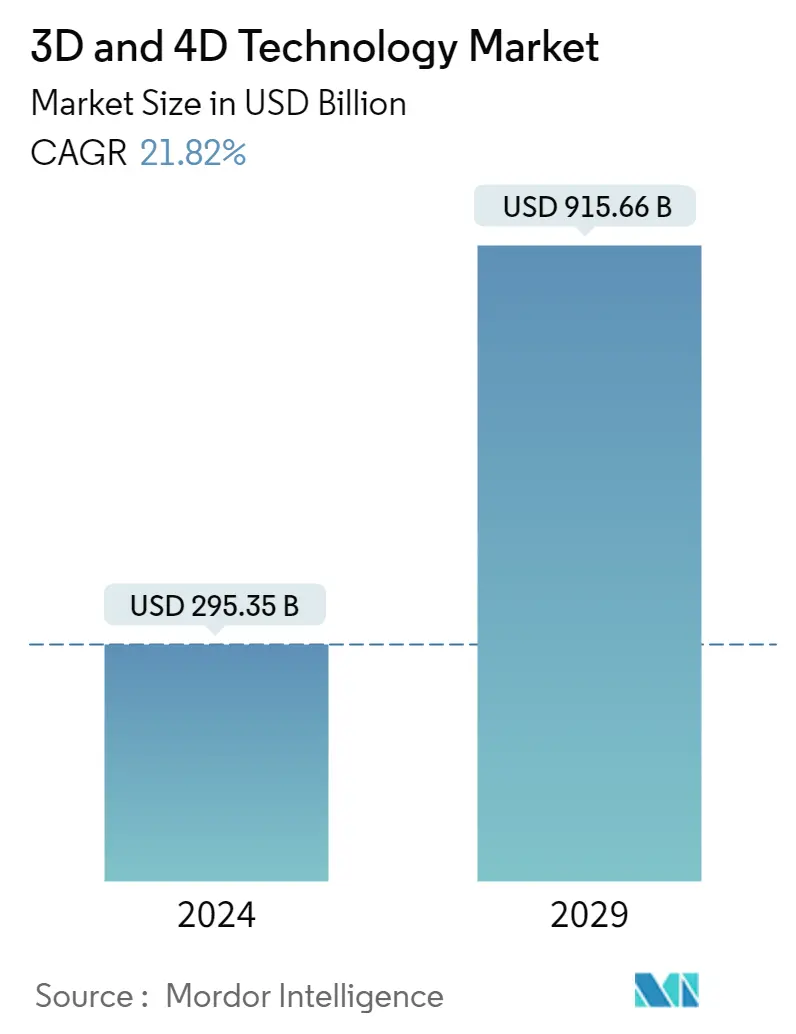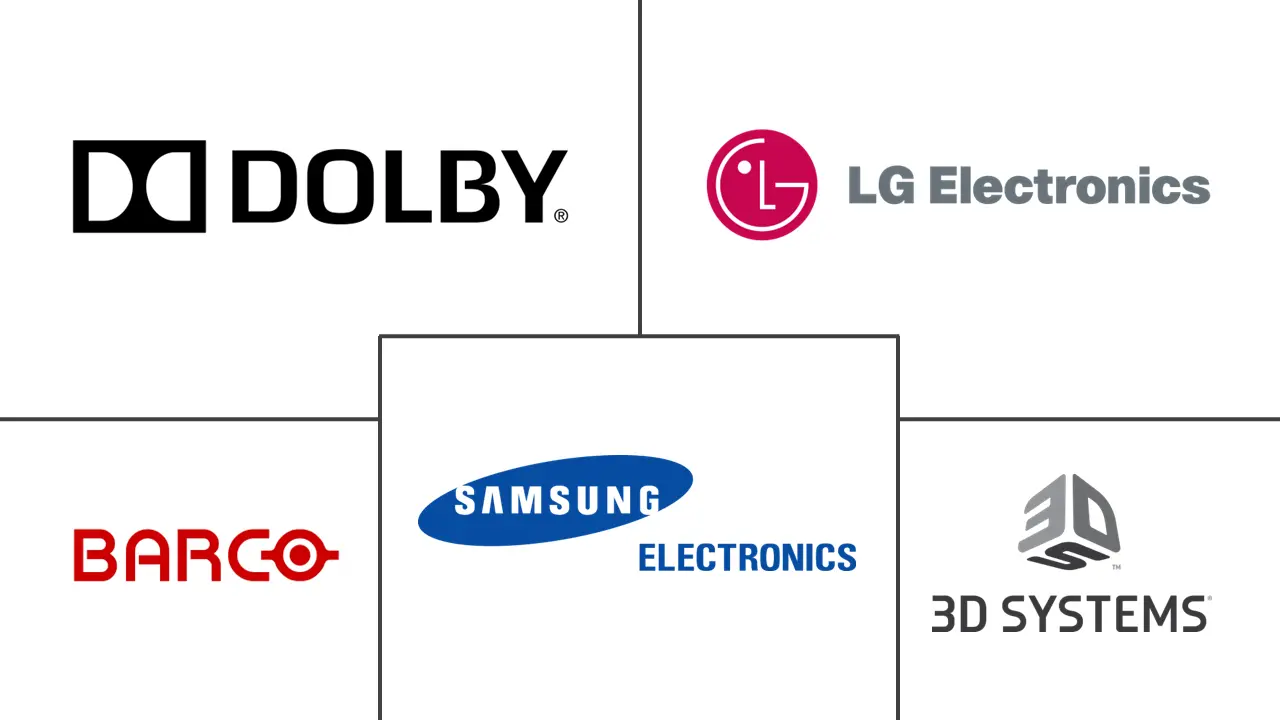Market Size of 3D & 4D Technology Industry

| Study Period | 2019 - 2029 |
| Market Size (2024) | USD 295.35 Billion |
| Market Size (2029) | USD 915.66 Billion |
| CAGR (2024 - 2029) | 21.82 % |
| Fastest Growing Market | Asia Pacific |
| Largest Market | North America |
Major Players
*Disclaimer: Major Players sorted in no particular order |
Need a report that reflects how COVID-19 has impacted this market and its growth?
3D & 4D Technology Market Analysis
The 3D & 4D Technology Market size is estimated at USD 295.35 billion in 2024, and is expected to reach USD 915.66 billion by 2029, growing at a CAGR of 21.82% during the forecast period (2024-2029).
3D and 4D technology are swiftly gaining popularity in various industries like healthcare, entertainment, education, manufacturing, automotive, and others due to their advanced visual effects, animations, and graphics capabilities. The 3D and 4D technologies provide a comprehensive platform for hand-drawn animation and physical impact. As a result of their superior technology, the adoption of 3D and 4D technologies has accelerated, which is likely to propel the market's growth.
- The increasing demand for 3D sensors in consumer electronics and the growing adoption of 3D sensors in the automotive industry is anticipated to drive the market's growth during the forecast period. The home gaming industry offered one of the first practical applications of 3D sensing for consumers, with time of flight (ToF) sensors capturing the movements and gestures of players to create a new interactive gaming experience. However, the arrival of 3D sensing is most noticeable in today’s smartphone technology. User-facing 3D scanning enhances security through facial recognition while world-facing 3D sensing creates new opportunities for high-performance depth-sensing photography and augmented reality. As the demand for 3D camera technology grows, illumination sources, LAS filters, and engineered diffuser production volumes are expected to soar.
- Further, biometric scanning and other 3D sensing applications are redefining the world of consumer electronics. Tablets and laptops are expanding on mobile devices' AR/VR, motion sensing, and security innovations. For instance, the gesture recognition capabilities of Microsoft Kinect that revolutionized the home gaming industry expanded to multi-player 3D position sensing, facial expression detection, and touchless heart rate monitoring.
- Face recognition functions have been added to 3D sensing applications, enhancing the security of laptop computers and mobile devices while boosting digital photo quality and resolution. Further, biometric scanning and other 3D sensing applications are redefining the world of consumer electronics. Tablets and laptops are expanding on mobile devices' AR/VR, motion sensing, and security innovations. For instance, the gesture recognition capabilities of Microsoft Kinect that transformed the home gaming industry expanded to multi-player 3D position sensing, facial expression detection, and touchless heart rate monitoring.
- Manufacturing with mixed materials or technological products (such as circuit boards) is still in production. 3D printed products are made of layers, which are not as strong as parts produced by conventional techniques, such as injection molding. Manufacturers currently need more in the size of products they can make with 3D printing. The technology’s ability to revolutionize mass-production manufacturing is still a long way off. Even today, 3D printers are still largely used for making one-off prototypes or small-scale print runs. Hence, the cost, availability, and material issues associated with 3D printing technologies hinder the market's growth.
- However, implementing 3D and 4D technologies can involve significant upfront costs, including hardware, software, content creation, and training. This cost barrier could limit adoption, especially for smaller businesses or industries with tighter budgets.
- Further, COVID-19 had a mixed impact on the overall market. During the initial stages of the lockdown, the disruptions in the supply chain and reduced consumer spending negatively impacted the market. However, in the later stages, the need for collaborative and immersive technologies increased as remote work became increasingly common during lockdowns and restrictions.
